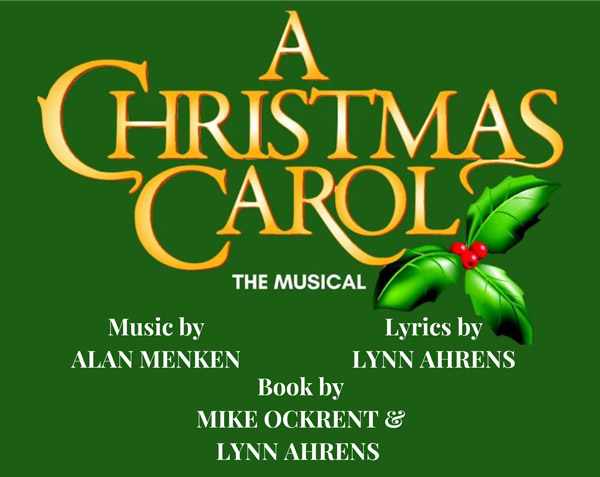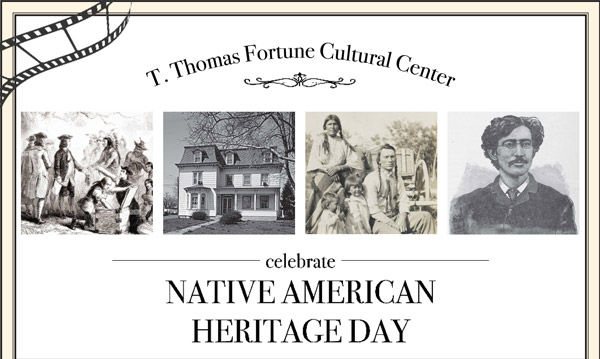By Christopher Benincasa, JerseyArts.com
originally published: 08/21/2019
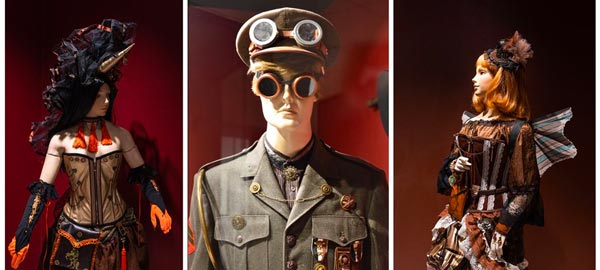
We recently spoke with the artists of “Steampunk Fashion,” on view at the Morris Museum through October 6, and curator Kathy Francis. Paige Gardener, Amber O’Boyle Kulp and Colleen O’Neill all have original costumes and accessories in the exhibition, alongside examples of 19th-century, Victorian-era styles from the museum’s permanent collection, as well as hand-crafted fascinators, pins, earrings and necklaces in the Museum Shop.
What is “steampunk”? We asked the experts about this aesthetic genre steeped in science fiction, alternate histories, and, of course, opulent fashion. (Amber O’Boyle Kulp spoke to us from a thrift store, where she was collecting material for new projects.)
Jersey Arts: So, where are you thrifting right now?
Amber O’Boyle Kulp: Oh, I'm at a little charity thrift called Liberty Thrift. They're having a 50-cent sale this morning. We use a lot of upcycled and vintage items at my company, KISS Designs. Pretty much whatever catches my eye – like a magpie. It’s festival season, so every flat surface in my house is currently covered with feathers, fabric or a sewing machine or two.
Colleen O’Neill: Aren’t we all kind of like magpies? I think that’s a bit of a requirement for a steampunk maker! My studio is littered with thrift store finds and random scraps of things that I’ve collected to use in my creations. My dad is a musical instrument repair tech and he gives me all the left over brass pieces from his workshop. I’ve got about 30 trumpet bells just piled in the corner right now.
Paige Gardener: Yep – all of my costuming is created and crafted from salvaged material. I have special permission from my local Home Depot to go into their garbage every week and pull things out.
JA: Kathy, how did the Morris Museum decide to focus on this genre?Kathy Francis: Well, it all starts with the gem of our collection, the Murtogh D. Guinness Collection of Mechanical Musical Instruments and Automata. We often do spin-off exhibitions, and so we decided that we were going to do a series of exhibitions called “A Cache of Kinetic Art” – and this year's theme was “Simply Steampunk.” So, I suggested that steampunk fashion might be a nice tie-in because steampunk is not just the fashion; it's art, it's architecture, it's home furnishings, it's music. It's an aesthetic you find everywhere, but I think the most identifiable piece of steampunk for the average person is costume design. It's the outfits.
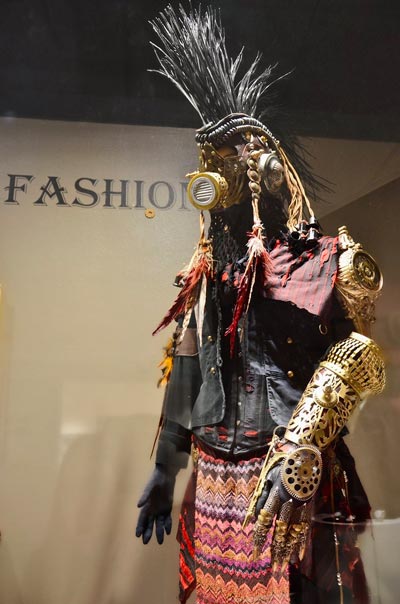 JA: For the uninitiated, we might need to explain a couple of things. For starters, what is steampunk, exactly? What does that term mean?
JA: For the uninitiated, we might need to explain a couple of things. For starters, what is steampunk, exactly? What does that term mean?
KF: It's becoming more and more mainstream, but it is kind of a subculture right now. If you ask a bunch of people what steampunk is, you'll get a bunch of different answers. You kind of have to understand the Victorian Era, and maybe a little bit of Edwardian as well, in order to understand steampunk – and generally what was happening in the 19th century – the Industrial Revolution, the birth of science fiction, authors like H. G. Wells, Jules Verne, Mary Shelley. They wrote stories of fantastical adventure and technology gone awry. New technologies, like steam locomotives, the typewriter, the telephone, the electric light bulb, photography. There was just this sense of adventure and exploration that was booming during that time, and the fashion really defined who you were. So, you wrap all of those things together and you marry them with our modern age, and that's kind of what steampunk is. It's retro-futurism. That's the way I see steampunk. I don't know if the ladies have a different definition.
AO: For me, as an artist, the most important thing is a willingness to experiment and explore. To me, steampunk is all-encompassing. You go to any steampunk convention and you will not only see costumes based on Victorian fashion. You will also see a lot of art from other subgenres. Steampunk is a really inclusive community.
KF: I think that that's a good point, Amber, because I think it may have started the way I just explained it, but, as it's becoming more popular, you are seeing a lot more new trends. It’s continuously evolving.
JA: Are there particular cultural touchstones you look to?
PG: Well, I've really moved away the traditional British thing. I'm currently looking for inspiration from the Ukraine, Romania, Russia. I encourage people, when I speak at panels or seminars, to just grab a globe and spin it.
CO: The idea of steampunk, to me, would be what our technology today would look like in the Age of Steam, the Industrial Revolution. But I think steampunk means something different to everyone. For some, it’s the iconic look of a costume, for others it’s a theme in a novel, or the fabrication of some contraption. While there is definitely a base idea of what steampunk is, for me, it’s creativity, community and ingenuity.
AO: One of my favorite pieces in this exhibition is Colleen’s “Scottish Highlander.” I only did the clothing to get to showcase those wings and the jetpack. That jetpack is absolutely fantastic. Wings are one of Colleen’s specialties. That particular set of articulated wings has a nine-foot wingspan. They are absolutely gorgeous.
CO: Thanks, Amber! The Highlander character just sort of came together that way – I think maybe it’s the kilt. When we were dressing the mannequin at the museum, we put the clothing on first and someone started calling it “The Highlander” and it just stuck. Wings are a specialty at my company, The Roguish Rabbit. The piece on display was particularly fun to make because the jetpack on the back incorporates recycled musical instrument parts and lights.
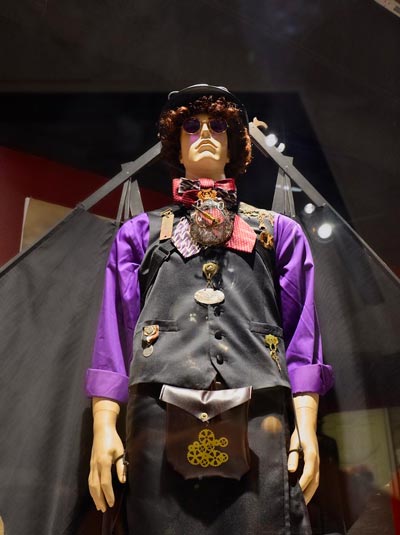 JA: What’s the reaction to this exhibition been like?
JA: What’s the reaction to this exhibition been like?
KF: I think people walk away feeling inspired to create. You know, for one of the openings that we had here, I actually put together my own little steampunk outfit. It’s not as spectacular as anything these artists have come up with, but I wore it proudly! Paige, Amber and Colleen – the work that they have done is truly, truly amazing.
AO: What I would love to see people take away from this exhibition is the simple truth that anyone can create. I have no formal training, yet here I am making art. And one of the things I love about the Morris Museum is that they've fully embraced that spirit.
PG: I don’t have any formal training either. As a single mother, there was no money for art school and high-end art supplies. It forced me to be resourceful. It can be done. Art is accessible to anyone who is persistent and patient.
CO: This is apparently a showcase of what people without formal training can do because I, too, am not formally trained! I hope that this exhibition can inspire people to use their imaginations and create their own things. It doesn’t have to professional or perfect. You just have to put your heart into it, and do it because it’s something you love.
About the author: Christopher Benincasa is an Emmy Award-winning arts and culture journalist. He produced content for NJ PBS for a decade before co-founding PCK Media. Christopher currently works as a freelance producer, video editor, writer, and communications specialist for a diverse set of commercial, non-profit, and government clients. His work has been featured on various PBS stations, and in American Abstract Artists Journal, The Structurist, Paterson Literary Review, and JerseyArts.com.
Content provided by
Discover Jersey Arts, a project of the ArtPride New Jersey Foundation and New Jersey State Council on the Arts.
FEATURED EVENTS
Narrow results by date, categories, or region of New Jersey.
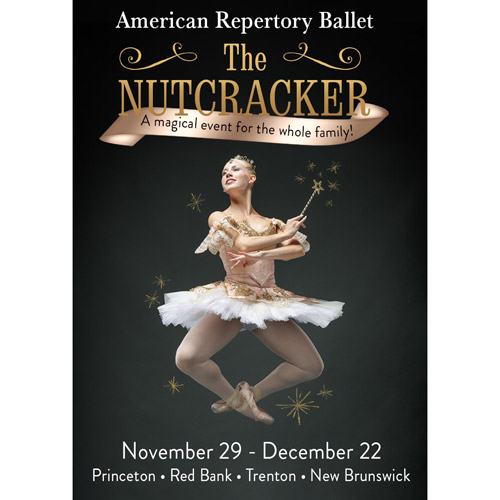
American Repertory Ballet's THE NUTCRACKER
Friday, November 29, 2024 @ 7:00pm
McCarter Theatre Center
91 University Place, Princeton, NJ 08540
category: dance
View event page for full information

American Repertory Ballet's THE NUTCRACKER
Friday, November 29, 2024 @ 2:00pm
McCarter Theatre Center
91 University Place, Princeton, NJ 08540
category: dance
View event page for full information
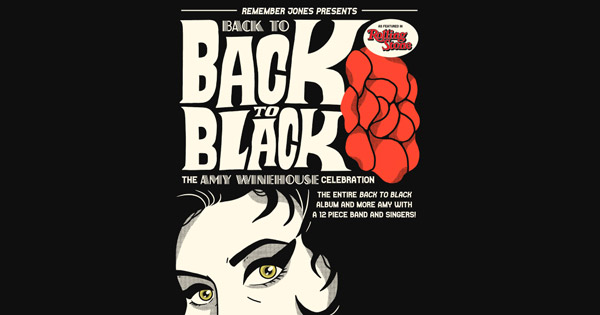
Remember Jones Presents back to BACK TO BLACK: the Amy Winehouse Celebration
Friday, November 29, 2024 @ 7:30pm
The Vogel
99 Monmouth Street, Red Bank, NJ 07701
category: music
View event page for full information
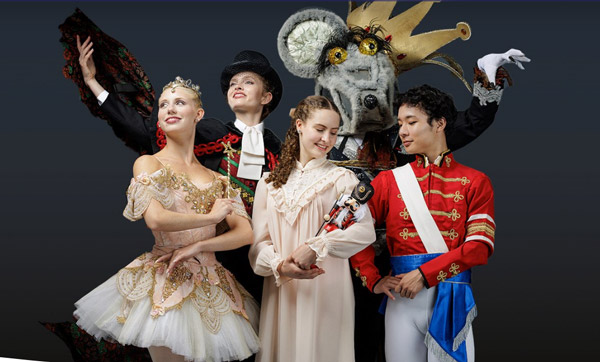
American Repertory Ballet Presents "The Nutcracker"
Friday, November 29, 2024 @ 7:00pm
McCarter Theatre Center (Matthews Theatre)
91 University Place, Princeton, NJ 08540
category: dance
View event page for full information

American Repertory Ballet Presents "The Nutcracker"
Friday, November 29, 2024 @ 2:00pm
McCarter Theatre Center (Matthews Theatre)
91 University Place, Princeton, NJ 08540
category: dance
View event page for full information
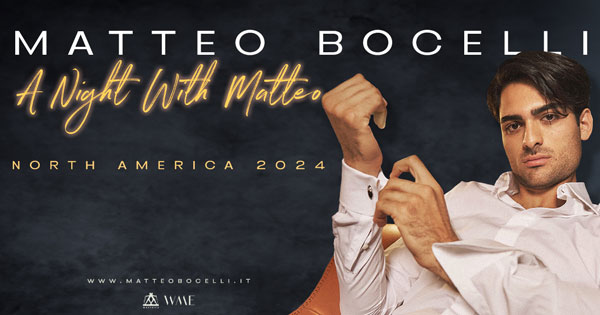
Matteo Bocelli – A Night with Matteo
Friday, November 29, 2024 @ 8:00pm
Count Basie Center for the Arts
99 Monmouth Street, Red Bank, NJ 07701
category: music
View event page for full information
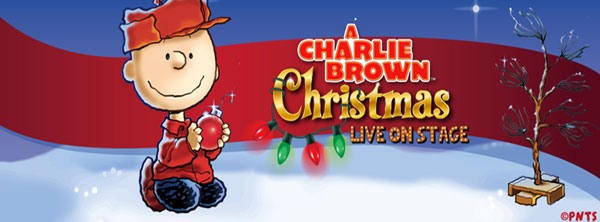
A Charlie Brown Christmas: Live on Stage
Friday, November 29, 2024 @ 5:00pm
Mayo Performing Arts Center (MPAC)
100 South Street, Morristown, NJ 07960
category: kids
View event page for full information

A Charlie Brown Christmas: Live on Stage
Friday, November 29, 2024 @ 2:00pm
Mayo Performing Arts Center (MPAC)
100 South Street, Morristown, NJ 07960
category: kids
View event page for full information

Anthony Rodia
Friday, November 29, 2024 @ 8:00pm
Bergen Performing Arts Center (bergenPAC)
30 North Van Brunt Street, Englewood, NJ 07631
category: comedy
View event page for full information
More events
Event Listings are available for $10 and included with our banner ad packages
EVENT PREVIEWS

Mile Square Theatre presents the World Premiere of "The Christmas Show Must Go On"
(HOBOKEN, NJ) -- Mile Square Theatre presents the World Premiere of The Christmas Show Must Go On by Pia Wilson from November 29 through December 15, 2024. This is a new classic tale for Christmas! The fairies in the Christmas Realm have been losing their power and the Christmas ghosts may all be leaving the realm to become Halloween ghosts. Can the Christmas Fairy welcome humans to the show for the first time ever, stop the ghosts from defecting, and make the annual Christmas Show happen?
UPCOMING EVENTS
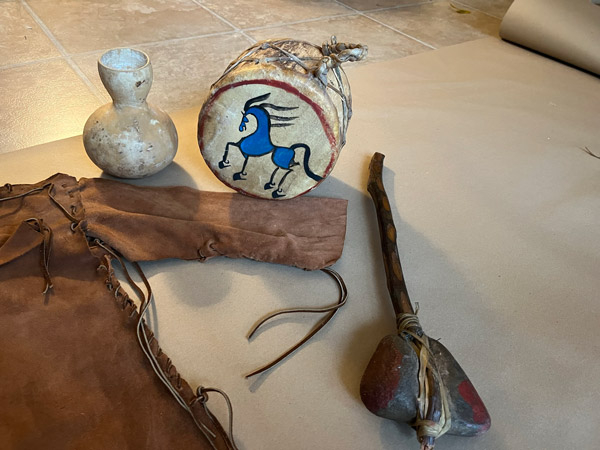
South Jersey's Indigenous Communities Celebrated in New A.C. Arts Garage Exhibit
(ATLANTIC CITY, NJ) -- A new exhibit at the Noyes Arts Garage of Stockton University will celebrate two southern New Jersey tribal communities through the display of historical documents, traditional artifacts and contemporary art. "Still Here: The Nanticoke Lenni-Lenape and Powhatan-Renape Nations of Southern New Jersey" opens October 9 and runs until January 5, 2025.




 JA: What’s the reaction to this exhibition been like?
JA: What’s the reaction to this exhibition been like?






